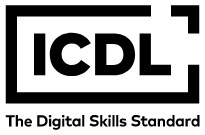Multi-Scale LBP and GMM-Based Texture Recognition and Reproduction for Building Decoration Materials
Abstract
With the increasing demand for material texture recognition and reproduction in the architectural decoration industry, traditional methods relying on manual annotation are inefficient, and existing technologies are difficult to meet the requirements of complex texture processing. To accurately identify the texture and high-quality reproduction of building decoration materials, a texture recognition method based on multi-scale Local Binary Pattern algorithm combined with Gaussian mixture model clustering is proposed, and a complete model including image preprocessing, feature extraction, and texture reproduction modules is constructed. The experimental results on the Dresden Texture Dataset dataset show that the proposed method performs well in texture feature extraction, with a maximum accuracy of 96.84% for tile texture recognition and an average intersection to union ratio (MIoU) of 0.97. The practical application results show that the proposed method has a fast texture recognition speed and less memory consumption. The average time and size of the generated CSV files are 2.93 s and 8.75 KB, respectively, while the average time and size of the CSV files generated by the 3D Gaussian speckle model are 4.42 s and 21.41 KB, respectively. Meanwhile, the comprehensive score of texture reproduction performance is 8.93 points, followed by 8.27 points for 3D Gaussian speckle. From this, the method proposed by the research can quickly identify and reproduce the complex textures of building decoration materials with high fidelity. This study provides a new technological solution for digital texture recognition and production control of building decoration materials, promoting the intelligent and high-quality development of the building decoration industry.
Full Text:
PDFReferences
Hwang S W, Lee T, Kim H, Chung H, Choi J G, Yeo H. Classification of wood knots using artificial neural networks with texture and local feature-based image descriptors. Holzforschung, 2022, 76(1): 1-13.
Xu X. Multimedia VR image improvement and simulation analysis based on visual VR restructuring algorithm. Informatica, 2024, 48(1): 107-118.
Wimmer G, Schraml R, Hofbauer H, Petutschnigg A, Uhl A. Robustness of texture-based roundwood tracking. European Journal of Wood and Wood Products, 2023, 81(3): 669-683.
Abdul Hamid L B, Mohd Khairuddin A S, Khairuddin U, Rosli N R, Mokhtar N. Texture image classification using improved image enhancement and adaptive SVM. Signal, Image and Video Processing, 2022, 16(6): 1587-1594.
Liu X, Aldrich C. Deep learning approaches to image texture analysis in material processing. Metals, 2022, 12(2): 355-377.
Kamijyo R, Ishii A, Coppieters S, Yamanaka A. Bayesian texture optimization using deep neural network-based numerical material test. International Journal of Mechanical Sciences, 2022, 223(1): 107285-107301.
Shukla A, Kalnoor G, Kumar A, Yuvaraj N, Manikandan R, Ramkumar M. Improved recognition rate of different material category using convolutional neural networks. Materials Today: Proceedings, 2023, 81(1): 947-950.
Bai N, Xue Y, Chen S, Shi L, Shi J, Zhang Y, Guo C F. A robotic sensory system with high spatiotemporal resolution for texture recognition. Nature Communications, 2023, 14(1): 7121-7143.
Siddiqui Y, Thies J, Ma F, Shan Q, Nieß ner M, Dai A. Texturify: Generating textures on 3d shape surfaces. European Conference on Computer Vision. Cham: Springer Nature Switzerland, 2022, 13663(1): 72-88.
Cao T, Kreis K, Fidler S, Sharp N, Yin K. Texfusion: Synthesizing 3d textures with text-guided image diffusion models. Proceedings of the IEEE/CVF International Conference on Computer Vision. 2023, 1(1): 4169-4181.
Gao J, Shen T, Wang Z, Chen W, Yin K, Li D, Fidler S. Get3d: A generative model of high quality 3d textured shapes learned from images. Advances in Neural Information Processing Systems, 2022, 35(1): 31841-31854.
Li D, Li X, Wang B. Texture direction recognition of wooden beams and columns based on improved meta-learning. Signal, Image and Video Processing, 2023, 17(8): 4447-4454.
Chen Y. Indoor environment 3D space design based on 3D modeling and image processing. Informatica, 2025, 49(9): 103-112.
Vu H N, Nguyen M H, Pham C. Masked face recognition with convolutional neural networks and local binary patterns. Applied Intelligence, 2022, 52(5): 5497-5512.
Prema C E, Suresh S, Krishnan M N, Leema N. A novel efficient video smoke detection algorithm using co-occurrence of local binary pattern variants. Fire Technology, 2022, 58(5): 3139-3165.
Zhang Z, Wang M. Multi-feature fusion partitioned local binary pattern method for finger vein recognition. Signal, Image and Video Processing, 2022, 16(4): 1091-1099.
Angizi S, Morsali M, Tabrizchi S, Roohi A. A near-sensor processing accelerator for approximate local binary pattern networks. IEEE Transactions on Emerging Topics in Computing, 2023, 12(1): 73-83.
Gong G, Wang X, Zhang J, Shang X, Pan Z, Li Z, Zhang J. MSFF: A Multi-Scale Feature Fusion Convolutional Neural Network for Hyperspectral Image Classification. Electronics, 2025, 14(4): 797-824.
Wei H, Jia K, Wang Q, Ji F, Cao B, Qi J, Yan X. A texture feature extraction method considering spatial continuity and gray diversity. International Journal of Applied Earth Observation and Geoinformation, 2024, 130(1): 103896-103922.
Ress V, Meyer J, Zhang W, Skuddis D, Soergel U, Haala N. 3D Gaussian Splatting aided Localization for Large and Complex Indoor-Environments. arXiv preprint arXiv. 2025, 2502(1):13803-1311.
Pan X, Yu Z, Yang Z. A deep learning multimodal fusion framework for wood species identification using near-infrared spectroscopy GADF and RGB image. Holzforschung, 2023, 77(11-12): 816-827.
DOI: https://doi.org/10.31449/inf.v49i6.9170

This work is licensed under a Creative Commons Attribution 3.0 License.









